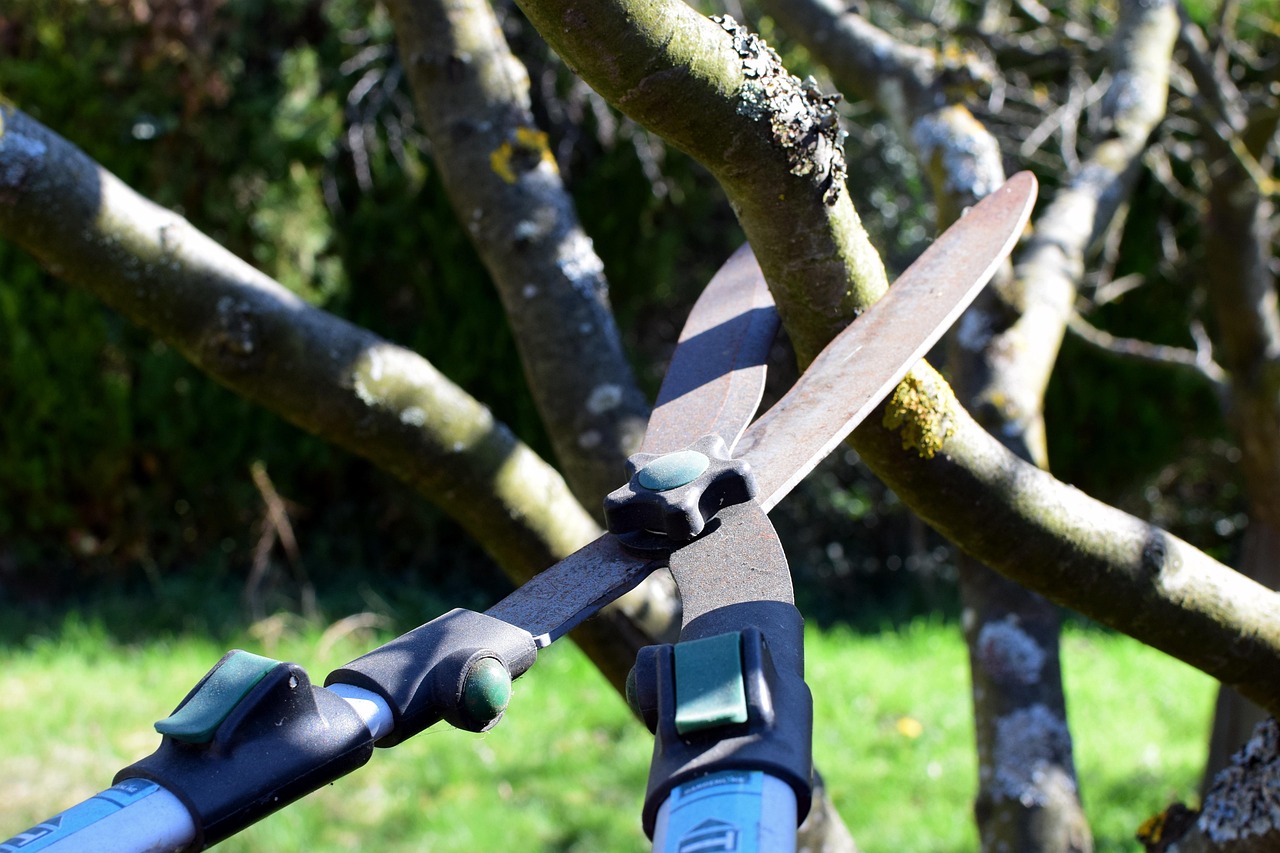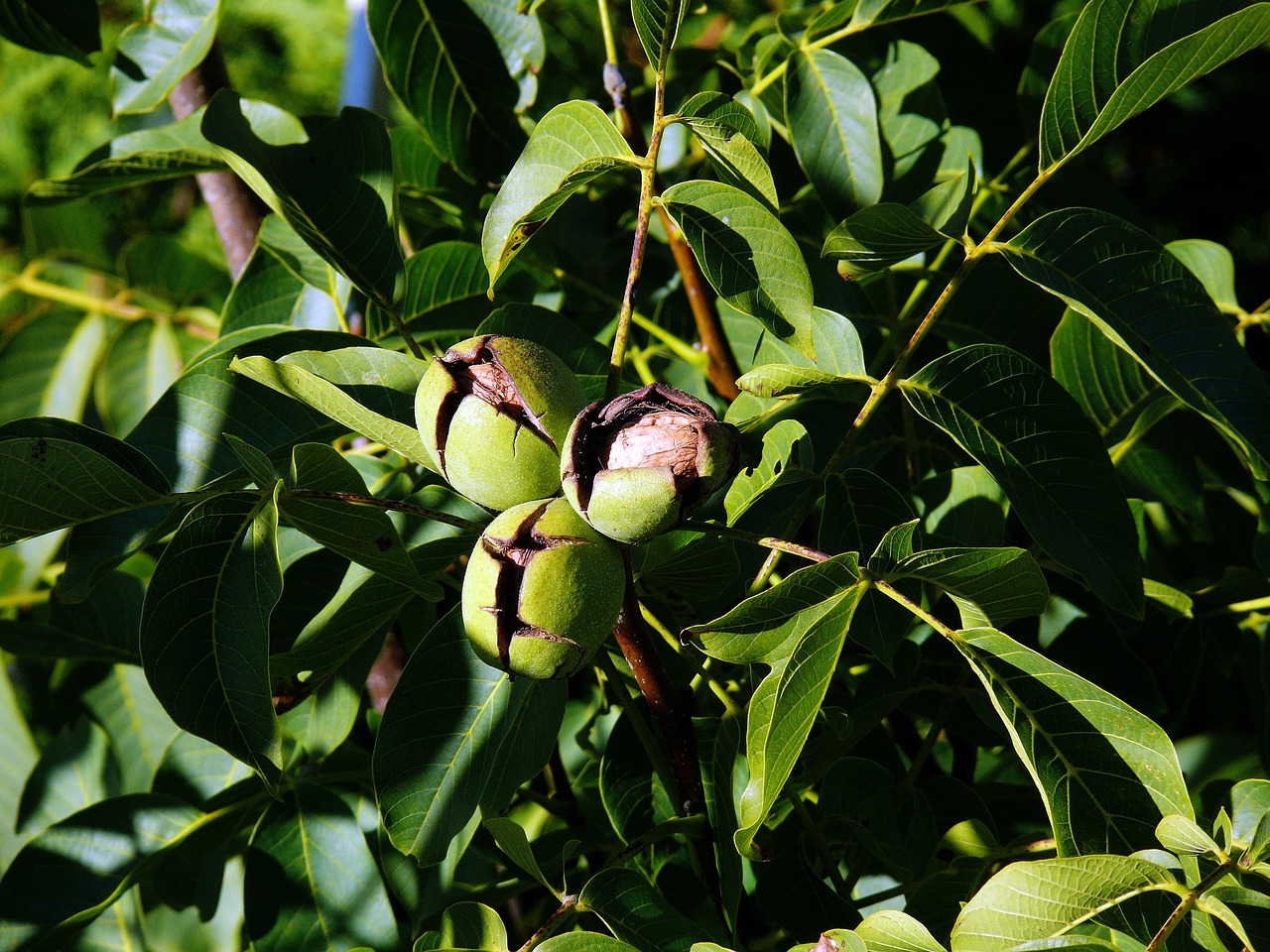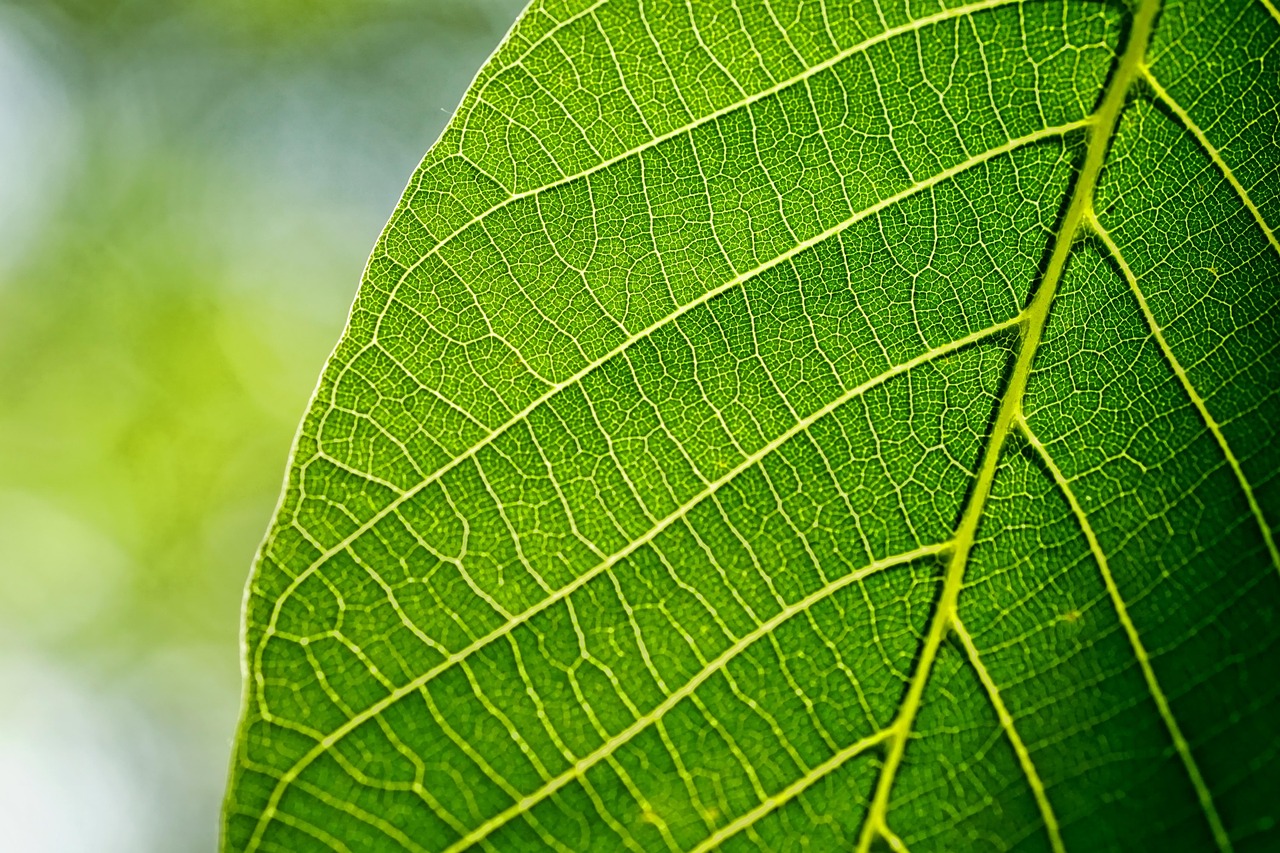Pruning black walnut trees is essential for optimizing nut production. Proper pruning techniques promote healthy growth and maximize yield. Timing and methods are crucial to ensure the best results when harvesting nuts.
The black walnut tree, known scientifically as Juglans nigra, is a valuable species in North America. It is revered not only for its delicious nuts but also for its high-quality wood. Proper care and maintenance, including pruning, significantly influence the productivity of these trees. Pruning helps to shape the tree, enhance air circulation, and allow sunlight to penetrate through the canopy. This results in healthier trees that yield more nuts.

Understanding when and how to prune black walnut trees is vital for both novice and experienced growers. The best time to prune these trees is during late winter or early spring before new growth begins. This timing minimizes stress on the tree and reduces the risk of disease. The goal of pruning should be to create a structure that supports strong branches while removing any dead or diseased wood.
Key Benefits of Pruning Black Walnut Trees
Pruning offers several advantages that can lead to improved nut harvesting. Here are some key benefits:
- Improved Air Circulation: Pruning allows for better airflow within the tree’s canopy, reducing the risk of fungal diseases.
- Increased Sunlight Exposure: Removing excess branches enables sunlight to reach more parts of the tree, enhancing nut development.
- Enhanced Tree Structure: A well-pruned tree has a balanced structure that can support heavier nut loads without breaking.
- Easier Harvesting: A well-maintained tree makes it easier to access the nuts during harvest time.
When planning your pruning strategy, it is important to consider the age and health of the tree. Young black walnut trees may require different techniques compared to mature trees. Additionally, regular maintenance can prevent more extensive pruning jobs later on. Understanding the specific needs of your trees will lead to better outcomes in nut production.

Essential Tools for Pruning
Having the right tools is critical for effective pruning. Here are some essential tools you should have:
| Tool | Description | Purpose |
|---|---|---|
| Hand Pruners | Small, manually operated cutting tool | For trimming small branches and stems |
| Loppers | Long-handled pruners for greater leverage | For cutting thicker branches |
| Saw | Manual or powered saw for larger limbs | For cutting larger branches that cannot be pruned with loppers or hand pruners |
| Safety Gear | Gloves, goggles, and hard hats | To protect yourself while pruning |
Before beginning any pruning activities, it is essential to ensure your tools are sharp and clean. Sharp tools make cleaner cuts, which helps prevent injury to the tree and reduces the risk of disease. Additionally, disinfecting your tools between cuts can help prevent the spread of pathogens.
Pruning Techniques for Black Walnut Trees
There are several techniques to consider when pruning black walnut trees. Each method serves a different purpose and should be applied based on the specific needs of your tree.

Crown Thinning
Crown thinning involves selectively removing branches from the upper canopy of the tree. This technique improves airflow and light penetration, which is beneficial for nut production. Focus on removing weak or crowded branches while retaining strong structural limbs.
Crown Raising
Crown raising is the practice of removing lower branches to provide clearance for walking or mowing beneath the tree. This technique can also help direct the tree’s energy into upper growth, which can result in better nut yields.
Crown Reduction
This technique reduces the overall height or spread of the tree’s crown. It may be necessary for trees that have grown too large for their environment. Care should be taken not to over-prune, as this can stress the tree.

When applying any pruning technique, always make clean cuts and avoid leaving stubs. Stubs can lead to decay and disease problems in the future.
In summary, understanding how to properly prune black walnut trees can significantly enhance nut production. With careful planning and execution, you can ensure that your trees remain healthy and productive for years to come.
Timing Your Pruning for Optimal Results
Timing is critical when it comes to pruning black walnut trees. The right time to prune can have a significant impact on the tree’s health and nut production. Generally, pruning should be done during the dormant season, which is typically late winter to early spring.
Pruning during this period has several advantages:
- Minimized Stress: Pruning while the tree is dormant reduces the stress placed on it, allowing for quicker recovery during the growing season.
- Improved Visibility: Without leaves, it is easier to see the tree’s structure. This visibility helps in making informed decisions about which branches to remove.
- Reduced Risk of Disease: Many diseases are more prevalent during the growing season. Pruning when the tree is dormant can lower the chances of infection.
It is essential to avoid pruning during fall or early winter. Doing so may stimulate new growth that will not have time to harden off before the cold weather sets in, leaving the tree vulnerable.
Understanding Tree Health Indicators
Before you begin pruning, it is important to assess the overall health of your black walnut trees. Identifying signs of stress or disease can help you tailor your pruning strategy. Here are some key indicators of tree health:
- Leaf Discoloration: Yellowing or browning leaves may indicate nutrient deficiencies or disease.
- Pest Infestation: Look for signs of pests, such as holes in leaves or visible insects on branches.
- Dead or Dying Branches: Branches that are brittle, dry, or lacking foliage should be removed to prevent further decay.
- Fungal Growth: The presence of mushrooms or other fungi at the base of the tree or on branches can signify rot.
If you notice any of these indicators, it may be worth consulting with an arborist before proceeding with pruning. They can provide valuable insights and recommendations tailored to your specific situation.
Pruning Techniques for Different Growth Stages
The pruning techniques you employ may vary depending on the age and maturity of the black walnut tree. Understanding how to approach each growth stage can lead to better outcomes.
Young Trees (0-5 years)
For young black walnut trees, the focus should be on establishing a strong framework. Here are some techniques to consider:
- Central Leader Pruning: Select a strong central leader and prune competing stems to ensure a single main trunk.
- Encouraging Lateral Growth: Trim back the tips of lateral branches to promote bushier growth and a fuller canopy.
- Removing Weak Branches: Eliminate any weak or poorly positioned branches that could hinder growth.
Mature Trees (5+ years)
Mature black walnut trees require different pruning approaches. The emphasis shifts toward maintaining health and enhancing nut production:
- Thinning Out: Focus on thinning out overcrowded areas within the canopy to improve airflow and sunlight penetration.
- Crown Maintenance: Regularly check for dead or diseased limbs and remove them promptly.
- Height Management: If the tree has grown too tall, consider crown reduction to maintain manageable height for harvesting.
Common Mistakes to Avoid When Pruning
Even experienced gardeners can make mistakes when it comes to pruning black walnut trees. Being aware of common pitfalls can help you achieve better results:
- Over-Pruning: Removing too much foliage can stress the tree and reduce nut production. Aim for a balanced approach.
- Poor Cuts: Always make clean cuts just above a bud or lateral branch. Avoid leaving stubs that can invite decay.
- Ignoring Tree Structure: Failing to consider the natural shape of the tree can lead to an unbalanced structure that is prone to breakage.
- Neglecting Safety: Always prioritize safety by wearing appropriate protective gear and using tools correctly.
Avoiding these common mistakes can significantly improve your pruning efforts and contribute to a healthier, more productive black walnut tree.
The Role of Fertilization Following Pruning
After pruning, it is beneficial to consider fertilization as part of your care routine. Fertilizing helps support recovery and encourages robust growth. Here are some important points about fertilization following pruning:
- Nutrient Requirements: Black walnut trees benefit from a balanced fertilizer that includes nitrogen, phosphorus, and potassium.
- Timing: Apply fertilizer in early spring before new growth begins for optimal absorption.
- Soil Testing: Conduct a soil test to determine nutrient levels and adjust fertilization accordingly.
A proper fertilization strategy can complement your pruning efforts, leading to healthier trees and more abundant nut harvests.
Identifying Common Pests and Diseases
Keeping black walnut trees healthy involves being vigilant about potential pests and diseases. Early detection and management of these issues can help maintain tree vitality and nut production. Below are some common pests and diseases that affect black walnut trees:
Common Pests
- Walnut Husk Fly: This pest lays eggs in the husks of developing nuts. Infested nuts often fall prematurely. Monitoring for adult flies during the growing season is crucial.
- Walnut Tree Weevil: The larvae of this weevil feed on the leaves, causing significant damage. Look for leaf holes and consider insecticidal treatments if infestations are severe.
- Spider Mites: These tiny pests can cause leaf discoloration and webbing on branches. Keeping trees well-watered can help prevent spider mite infestations.
Common Diseases
- Walnut Canker: This fungal disease leads to dieback in branches and cankers on the trunk. Pruning affected areas is essential to control the spread.
- Powdery Mildew: This fungal infection appears as a white powdery coating on leaves. Proper air circulation through pruning can help reduce its incidence.
- Root Rot: Caused by overwatering or poor drainage, root rot can severely damage or kill a tree. Ensure proper drainage practices to prevent this disease.
Regularly inspecting your trees for signs of these pests and diseases will allow for timely intervention, helping to protect your investment and enhance nut production.
Harvesting Black Walnuts
Once you have successfully pruned your black walnut trees, the next step is harvesting the nuts. The harvesting process can be quite involved and requires careful timing and technique to ensure maximum yield.
Harvest Timing
The best time to harvest black walnuts is typically between late September and early November, depending on your geographical location and climate. Here are some indicators that your nuts are ready for harvest:
- Husks Turning Dark: The green husks will begin to darken as they ripen.
- Fall from Tree: Mature nuts will start falling from the tree naturally. Collect them promptly to avoid damage from ground pests.
- Shell Hardening: The shells will harden as they mature. A hard shell indicates readiness for harvest.
Harvesting Techniques
To effectively harvest black walnuts, consider the following techniques:
- Gathering Fallen Nuts: Collect fallen nuts daily to prevent damage from insects or decay.
- Shaking the Tree: If accessible, gently shake branches to encourage nuts to fall. Use a padded tool to avoid damaging the tree.
- Using Tarps or Sheets: Place tarps or sheets on the ground to catch falling nuts. This simplifies collection and minimizes waste.
| Harvest Technique | Description | Advantages |
|---|---|---|
| Gathering Fallen Nuts | Collecting nuts from the ground after they drop. | Simplifies collection and reduces damage risk. |
| Shaking the Tree | Gently shaking branches to dislodge nuts. | Increases yield by encouraging more nuts to fall. |
| Using Tarps or Sheets | Laying tarps beneath trees to catch falling nuts. | Makes collection easier and helps avoid losing nuts. |
Post-Harvest Care
After harvesting, proper handling of black walnuts is essential for maintaining quality. Here are some considerations for post-harvest care:
- Cleansing: Remove debris from the harvested nuts by washing them lightly with water. This removes husk remnants and dirt.
- Drying: Lay out the nuts in a single layer in a cool, dry area. Proper drying prevents mold growth and ensures longevity.
- Storage: Store dried nuts in a cool, dark place in breathable containers like burlap sacks or mesh bags to allow air circulation.
By following these post-harvest practices, you can maintain the quality of your black walnuts and ensure they remain suitable for consumption or sale. Proper care during this phase is crucial for maximizing their value and usability.
Future Maintenance Strategies
Looking ahead, establishing a routine maintenance schedule will contribute to the long-term health and productivity of your black walnut trees. Here are some strategies to consider:
- Regular Inspections: Conduct periodic assessments of tree health, checking for pests and diseases throughout the growing season.
- Scheduled Pruning: Create a pruning calendar based on the growth stage of your trees, ensuring timely interventions as needed.
- Nutrient Management: Continually assess soil health and adjust fertilization based on ongoing soil tests to meet tree nutrient needs.
By incorporating these maintenance strategies into your overall care plan, you can foster a thriving environment for your black walnut trees, leading to productive nut harvesting seasons year after year.
Additional Considerations for Black Walnut Tree Care
In addition to the maintenance strategies already discussed, there are several other factors that can contribute to the health and productivity of your black walnut trees. These considerations can further enhance your nut harvesting experience and ensure long-term success.
Water Management
Proper irrigation is vital for the growth and productivity of black walnut trees. Here are some key points to consider regarding water management:
- Watering Schedule: Establish a consistent watering schedule, especially during dry spells. Young trees require more frequent watering until their roots are established.
- Soil Moisture Monitoring: Use a moisture meter or perform a finger test to check soil moisture levels. This will help you determine when to irrigate.
- Avoid Overwatering: Ensure that the soil has good drainage to prevent root rot. Black walnut trees prefer slightly moist but not saturated conditions.
Mulching Practices
Applying mulch around the base of your black walnut trees can offer several benefits:
- Weed Control: Mulch helps suppress weeds that compete for nutrients and moisture.
- Moisture Retention: A layer of mulch conserves soil moisture, reducing the need for frequent irrigation.
- Temperature Regulation: Mulch moderates soil temperature, protecting roots from extreme heat or cold.
Use organic mulches such as wood chips or straw, applying a layer of 2-4 inches around the base while keeping it away from the trunk to prevent rot.
Environmental Factors
The environment in which your black walnut trees are planted can significantly impact their growth. Here are some environmental considerations:
- Sunlight Exposure: Ensure that trees receive adequate sunlight, ideally at least six hours of direct sunlight each day. This is crucial for healthy growth and nut production.
- Soil Type: Black walnuts thrive in well-drained, loamy soils rich in organic matter. Conduct soil tests regularly to assess pH and nutrient levels.
- Protection from Extreme Weather: If possible, provide windbreaks or shade during extreme weather conditions to reduce stress on the trees.
Final Thoughts
Pruning black walnut trees is a multifaceted process that requires knowledge, patience, and dedication. The benefits of proper pruning extend far beyond aesthetics; they play a crucial role in maximizing nut production and ensuring the overall health of the trees. By understanding the specific needs of black walnuts, including optimal pruning techniques, timing, and ongoing maintenance practices, you can cultivate thriving trees that yield bountiful harvests.
Regular inspections for pests and diseases, combined with effective water management and nutrient strategies, will create a conducive environment for growth. Furthermore, adopting good post-harvest practices will ensure that your nuts are preserved for quality consumption or sale.
The journey of nurturing black walnut trees is rewarding, offering not only delicious nuts but also the satisfaction of contributing to a sustainable environment. As you implement these strategies, remember that each tree is unique, and adapting your approach based on observation and experience will lead to even greater success over time.
With careful planning and ongoing care, your black walnut trees can thrive and provide you with years of fruitful harvests. Embrace the journey of tree care, and enjoy the fruits of your labor!
